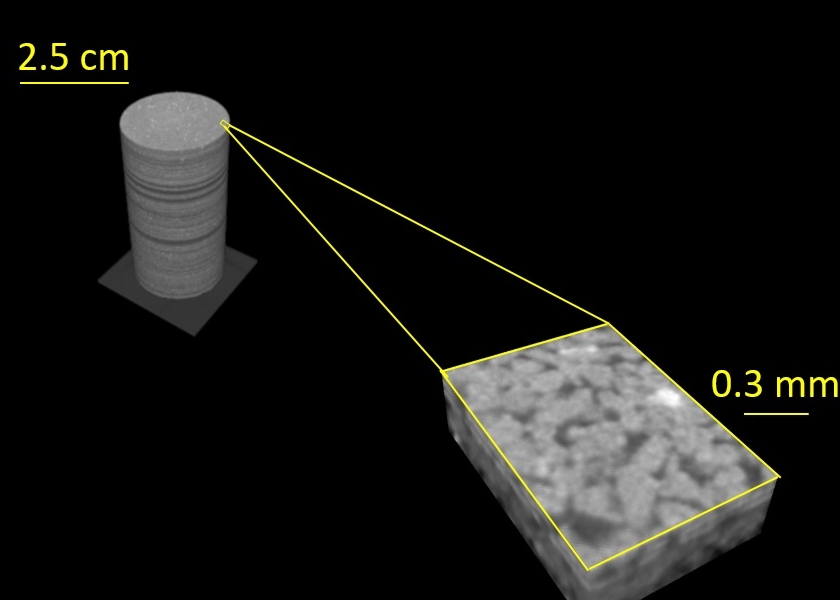Building a Better Rock Model
November 12, 2020

Once you crush, cut or fracture a rock, there are no do-overs. It’s a fact that means geoscientists have to be particularly careful about which rock samples they can sacrifice to physics experiments versus which ones should stay on the shelf.
A team of researchers from the Department of Geological Sciences is working to change that with a new method for creating digital replicas of rock samples that is more accurate and simpler to use than other techniques.
The digital replicas can take the place of the real thing in certain experiments, allowing scientists to learn about rock samples without having to touch them. They also allow scientists to collect data from samples that are too small to run certain experiments on, such as cuttings brought up when drilling for oil.
“Now we don’t have to take a rock into the lab,” said Ken Ikeda, a graduate student at the Jackson School of Geosciences. “We don’t have to risk a sample. There’s no way to ruin it.”
Ikeda is the lead author of a paper published June 8, 2020, in the Journal of Geophysical Research: Solid Earth that describes the new method. The other two authors are Jackson School graduate student Eric Goldfarb and Assistant Professor Nicola Tisato. In their study, the researchers tested their method against two others, comparing how the three techniques fared at calculating how fast seismic waves moved through a sample. The new method came closest to the speeds measured in the actual sample, with the calculation being off by 4.5%. The other methods were off by 4.7% and 29%.
Seismic velocity data is a fundamental tool used by geoscientists to learn about rock formations underground. But the researchers said their method could be used for calculating a number of other important rock properties, such as permeability or electrical conductivity.
Back to the Newsletter